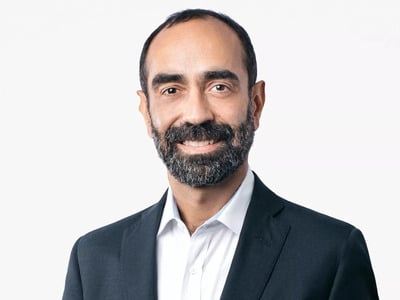(Money Metals News Service) Gold demand soared in the first quarter of 2025, hitting its highest Q1 level since 2016.
To explain what’s driving the trend, Mike Maharrey spoke with Juan Carlos Artigas, global head of research at the World Gold Council. Artigas offered key insights from their latest Gold Demand Trends report and shared what investors should know about this increasingly global market.
Artigas emphasized that gold must be understood in its full international context. While U.S. investors often focus narrowly on domestic factors like the dollar or interest rates, gold demand is shaped by activity around the world. Jewelry buying in India, bar and coin sales in China, and central bank purchases across emerging economies all influence gold’s price and stability.
As Artigas put it, “Gold is a global good.” Failing to account for that global nature leads to a narrow and often misleading view of the market.
(Interview Starts Around 6:31 Mark)
Who Is Juan Carlos Artigas?

Juan Carlos Artigas is the Global Head of Research at the World Gold Council, where he has led the organization’s market intelligence efforts since 2009. Based in New York, Artigas oversees a global team that delivers in-depth analysis on the dynamics of gold demand, supply, and pricing. His research helps institutional and retail investors understand gold’s evolving role as a strategic asset in global portfolios.
Under his leadership, the World Gold Council developed the Gold Valuation Framework—an academically validated model that explains gold’s performance through macroeconomic, financial, and market-specific lenses. This framework is now a cornerstone of the Council’s research output, widely referenced by analysts, institutions, and policymakers.
Before joining the World Gold Council, Juan Carlos Artigas served as a fixed income strategist at JPMorgan Securities, focusing on U.S. and emerging markets. There, he contributed to sovereign and corporate debt valuation models and published research for leading financial outlets.
Artigas holds a Bachelor of Science in Actuarial Sciences from ITAM (Instituto Tecnológico Autónomo de México), and earned both an MBA and a Master of Science in Statistics from the University of Chicago. He was also a Ph.D. candidate in Econometrics and Statistics at the same institution, bringing academic rigor and analytical precision to his role in the gold market.
Q1 2025 Highlights: Broad Participation and Steady Supply
Demand was strong across nearly every sector. Gold ETFs rebounded sharply after a weak 2024, jewelry buying held up despite higher prices, and consumer interest remained firm worldwide. Total global demand reached the highest Q1 level in nearly a decade.
Interestingly, jewelry demand measured in tonnage dipped slightly, but total spending actually rose. That’s because consumers, especially in Asia, continued to buy—just in smaller quantities. “People are still spending money on gold jewelry,” said Artigas, “they’re just buying smaller pieces.”
Another surprise was that recycling declined by 1%, even though gold prices rose. Historically, people sell more gold when prices rise. But this time, many held on to their gold, signaling continued faith in its long-term value. “People were not ready to part ways with their gold,” Artigas noted. That’s a bullish indicator for long-term investors.
Central Banks: Strong Buying… and Hidden Demand?
Central banks continued their buying streak for the 17th straight year. And while official IMF data reported modest purchases, the World Gold Council estimates far higher demand based on alternative methods.
Artigas explained that much of the buying is not captured in IMF reports, which are voluntary and often delayed. The Council works with Metals Focus, which analyzes customs data, conducts interviews, and reviews market intelligence to build a fuller picture.
The Q1 report showed that only about 22% of central bank gold buying was publicly disclosed. The rest happened under the radar. Despite this, Artigas said the Council’s estimates offer a fair representation of what’s actually occurring.
Geographic Divergence: East vs. West
Investment behavior varied widely by region. Chinese bar and coin demand came in at its second-highest level ever, just shy of the all-time record set in 2013. In fact, bar and coin demand rose 20 to 30% in many Asian countries.
By contrast, U.S. demand for physical gold hit its lowest point in five years. Artigas attributed this to a mix of investor habits and political sentiment. American investors often prefer ETFs or other paper instruments. There’s also a long-standing pattern: bar and coin demand in the U.S. tends to decline during Republican administrations and increase during Democratic ones.
That said, there are signs of a rebound. April 2025 data from the U.S. Mint shows physical gold demand picking up again, potentially reversing the early-year slump.
Meanwhile, in places like India, jewelry purchases blend culture and investment. Unlike in the U.S., Indian jewelry trades much closer to the spot price, which makes it a viable form of savings. These buyers view jewelry not as decoration but as a long-term store of value.
Rise of Gold ETFs in the East
Another trend catching analysts’ attention is the rise of gold ETF investment in India and China. Historically, these markets were dominated by physical gold ownership. Now, more investors in Asia are buying gold through financial instruments.
In China, that includes ETFs, bars, coins, and physical contracts traded on the Shanghai Gold Exchange. In India, recent tax reforms have made ETFs more appealing, creating new demand channels that didn’t exist a few years ago.
As their financial markets mature, Artigas said, “We are seeing new products being developed that allow more people to access gold in different ways.”
Looking Ahead: A Robust Outlook for Gold?
The World Gold Council doesn’t make price predictions, but Artigas provided some key insights. About 10 to 15% of gold’s 2025 price gains are due to geopolitical uncertainty. Ongoing trade conflicts, inflation risks, and monetary instability continue to drive demand.
Interest rates are another key factor. Even if they remain elevated, gold can benefit—especially if higher rates are driven by inflation rather than economic strength. Artigas noted that in many past cycles, gold has done well even with rising rates.
As for jewelry demand, high prices might temporarily cool enthusiasm. But if prices stabilize, consumer demand in India, China, and other key markets could bounce back quickly. “Pullbacks and volatility are normal,” said Artigas. “But the underlying factors for investment demand remain strong.”
Tools and Insights for Investors
The World Gold Council provides interactive charts, demand breakdowns, and economic models to help investors make informed decisions.
Artigas pointed to two important upcoming reports. The Central Bank Survey, coming in June 2025, will shed light on sovereign gold accumulation. And a mid-year market outlook later this summer will analyze macroeconomic trends shaping gold prices.
Final Thoughts
As gold hovers near or above $3,000 per ounce, investors should look beyond U.S. interest rates and the dollar. Bar and coin demand in Asia, central bank stockpiling, and a growing array of gold-backed financial products are reshaping the market.
“Gold is intuitive,” said Artigas. “Once you understand both the consumer and investment dynamics, it all starts to make sense.”

